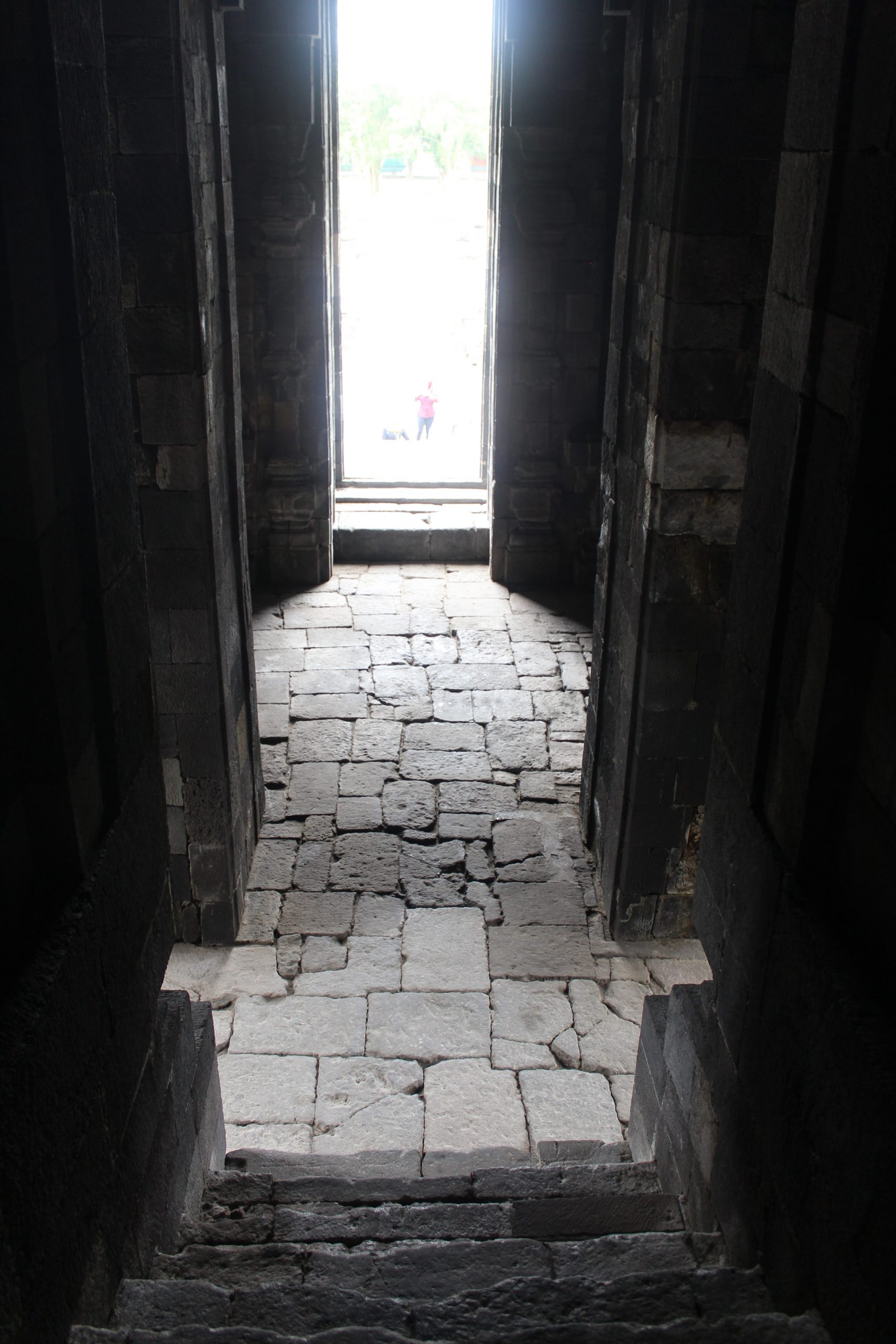Indonesia, Central Java, 8th century, Andesite
Once a bustling city, Prambanan is a multi-religious temple-complex at the center of Java. While the site is best known for its Hindu temples, it is also home to Candi Sewu, the largest enterable Buddhist temple in all of Indonesia.
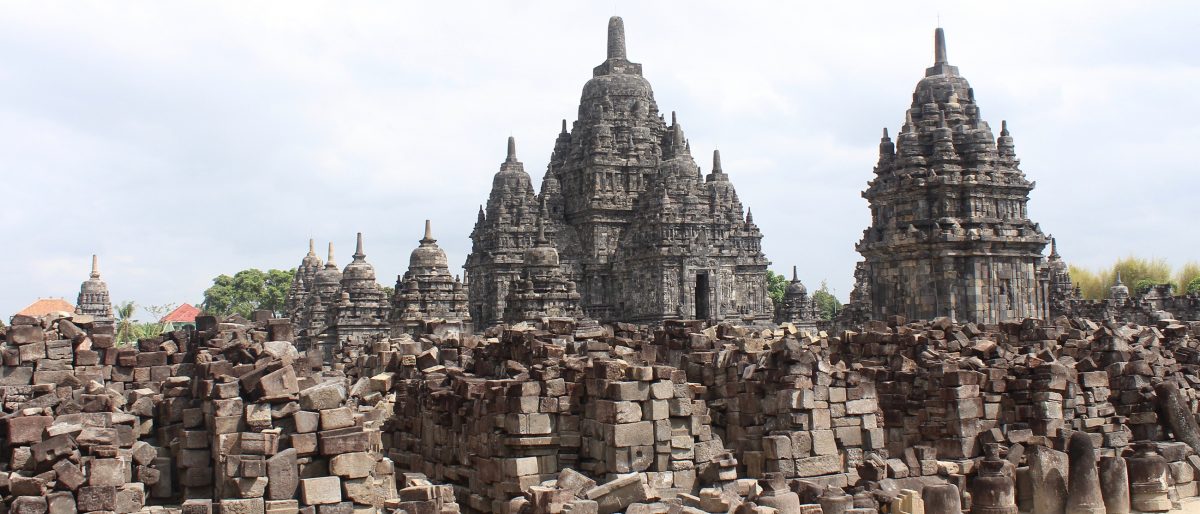
Composed of hundreds of small stupas surrounding a cruciform central shrine, the complex covers more than twenty-seven square kilometers (seventeen square miles) and is replete with finely carved Buddhist deities.
In the spread of Indian religious ideas, Buddhists played an especially active role. Buddhist communities found great sponsorship in Indonesia’s eighth- and ninth-century rulers. The plethora of Buddhist figures at Candi Sewu proclaim the establishment’s religious dedication, and the temple’s massive scale points to elite patronage.
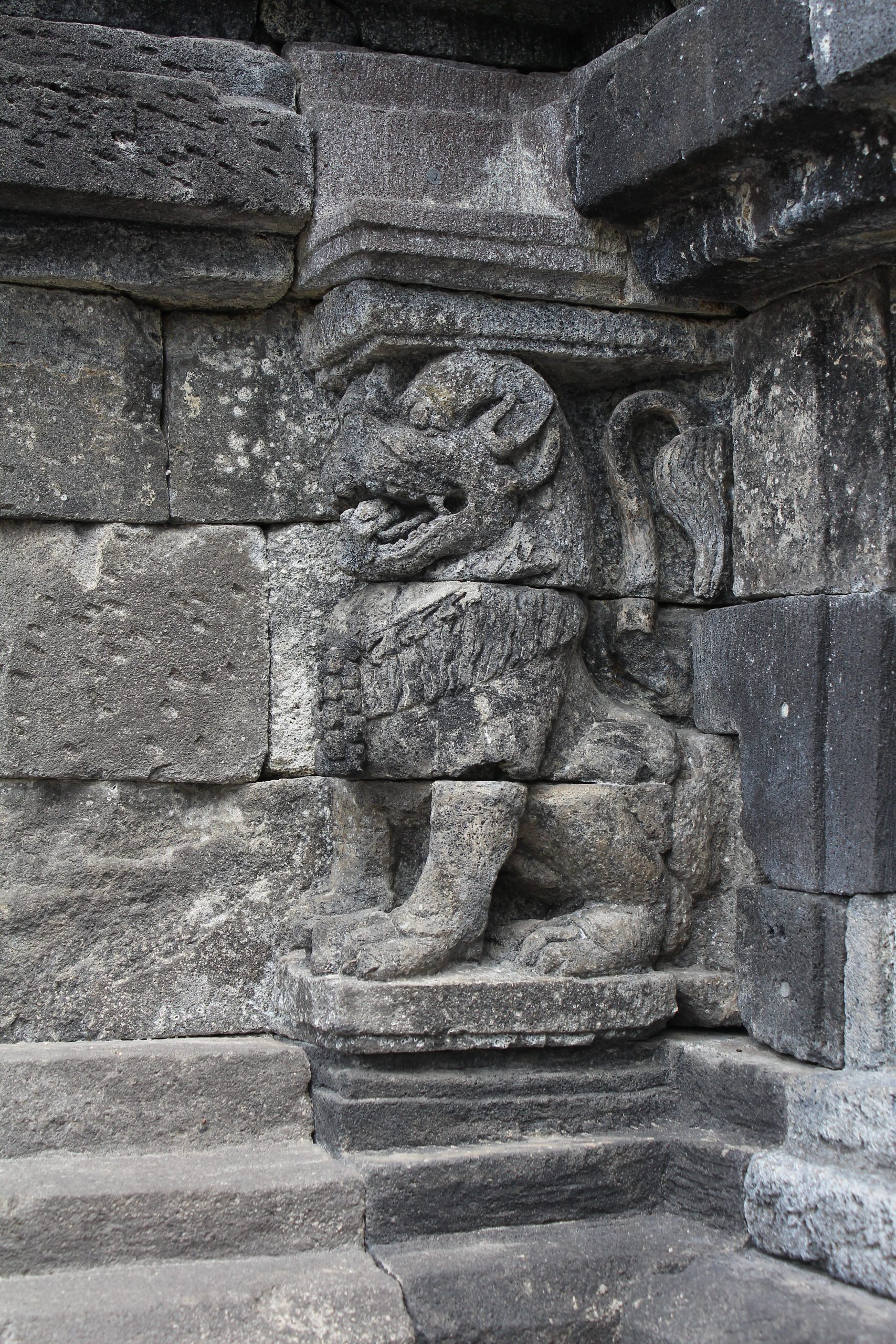
Candi Sewu
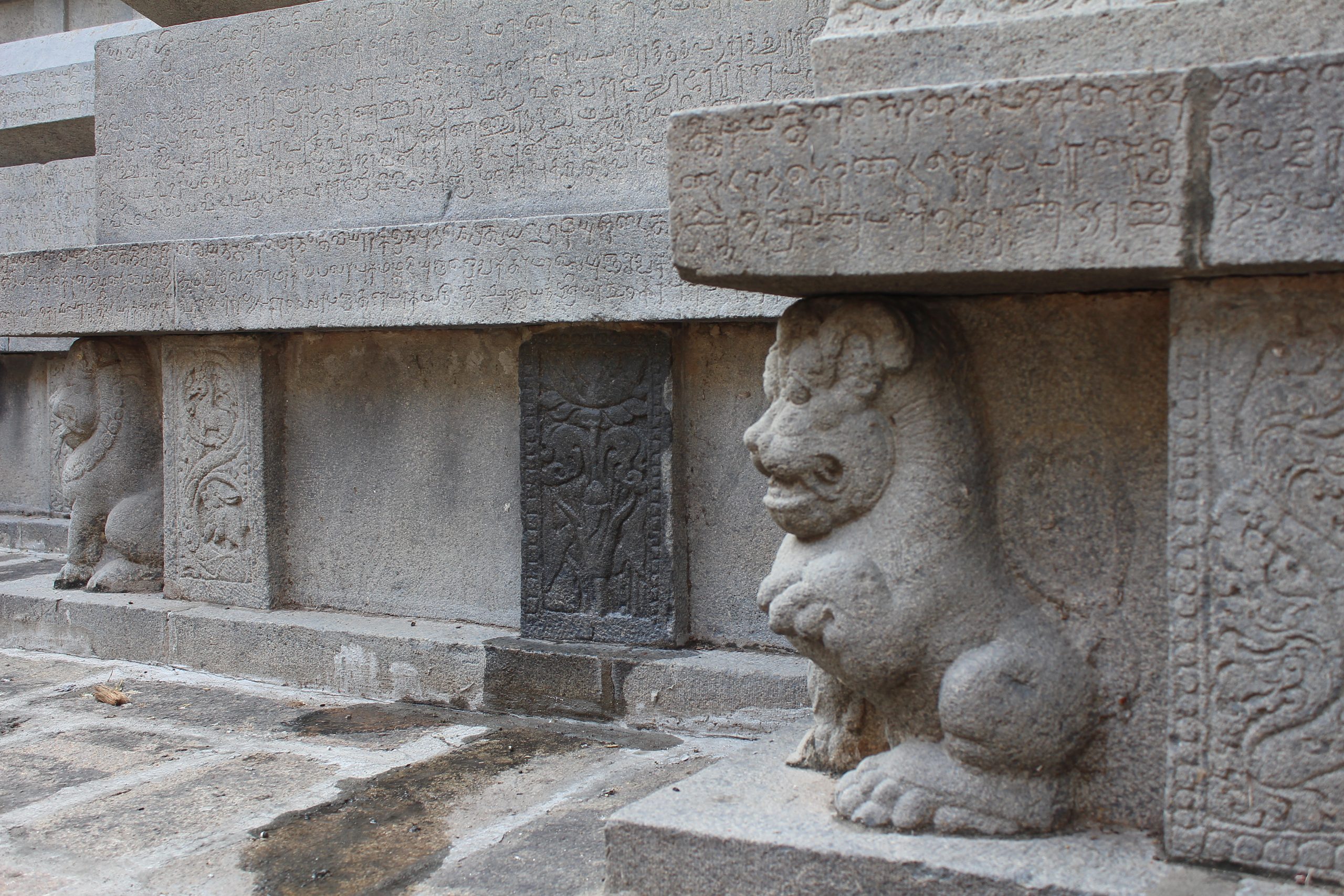
Sundaravarada-Perumal temple; south India, Tamil Nadu, Uttiramerur; Pallava period, 9th century; granite
The eighth and ninth centuries were a period of heightened contact between India and Southeast Asia. Imagery and texts circulated along with the people who traveled across the regions. Candi Sewu’s sculptures show close connections with Indian sculpture from this period. See, for example, the lions that are positioned at corners along the temple’s base. Much like the lion at a temple in Tamil Nadu, the animal sits back on its haunches, its tail upturned and mouth open, and its head seems to support the structure above.
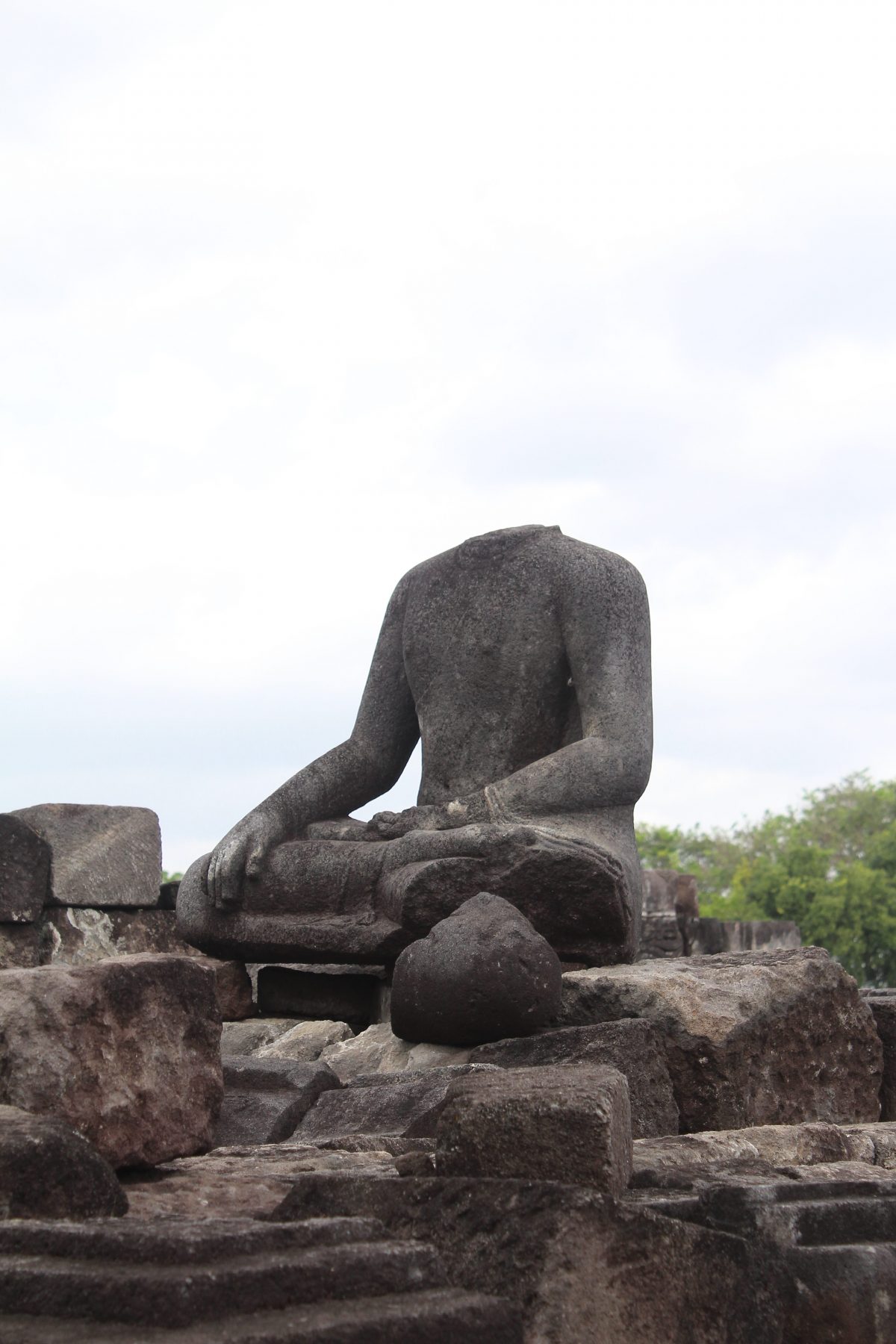
Today, many of Candi Sewu’s freestanding buddhas are missing their heads. Such losses are due to looting, intentional destruction, and forces of nature over the course of the last millennium.

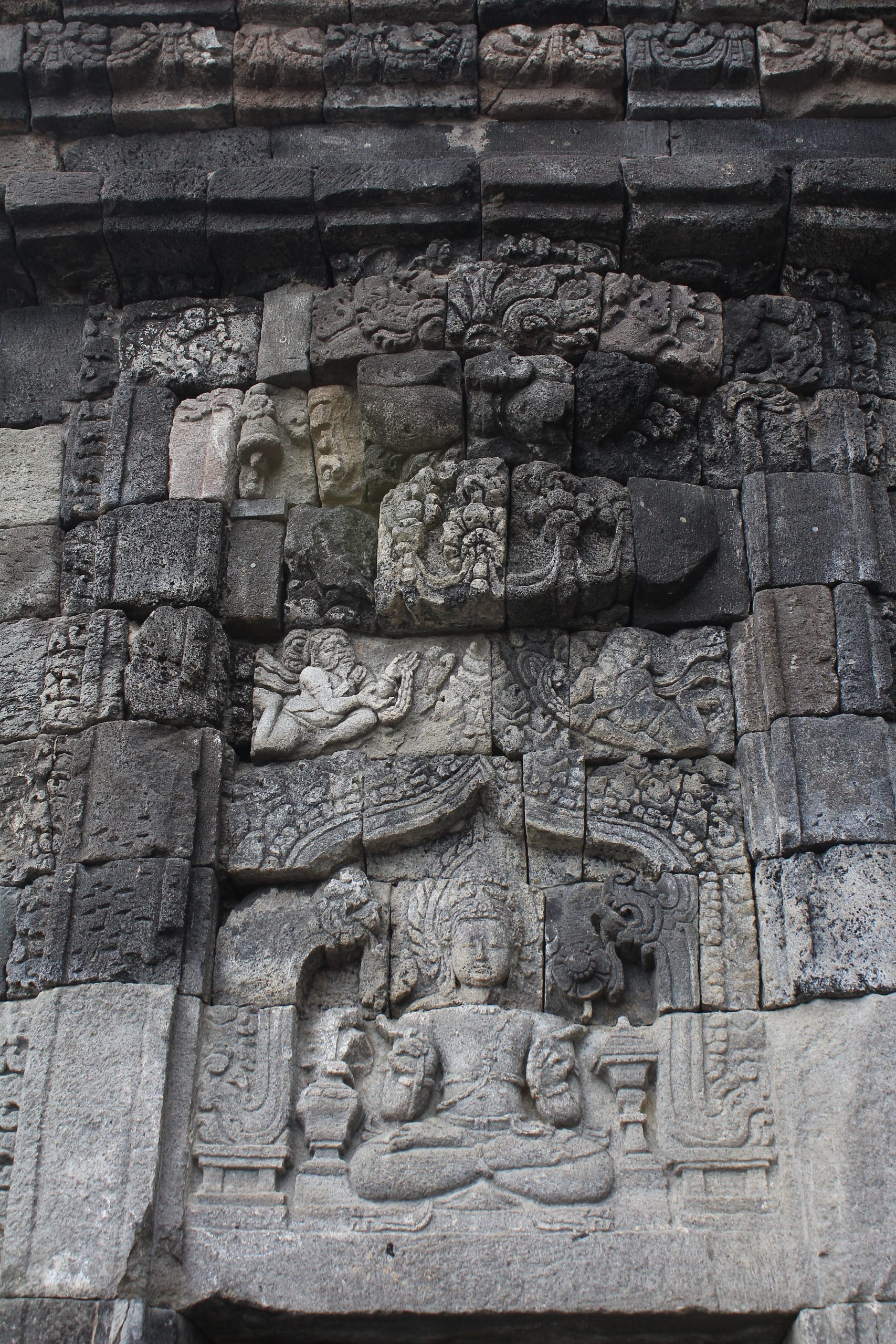
Relief carvings on surviving and restored buildings have better stood the test of time. Prominent imagery includes bodhisattvas in palatial settings, gandharvas and devatas (minor deities), and flying rishis (sages) who shower devotees with blessings as they enter the temple. Bells and billowing garments evoke sound and movement.

A flight of stairs leads through a vestibule and into the central shrine, which quickly plunges into darkness.
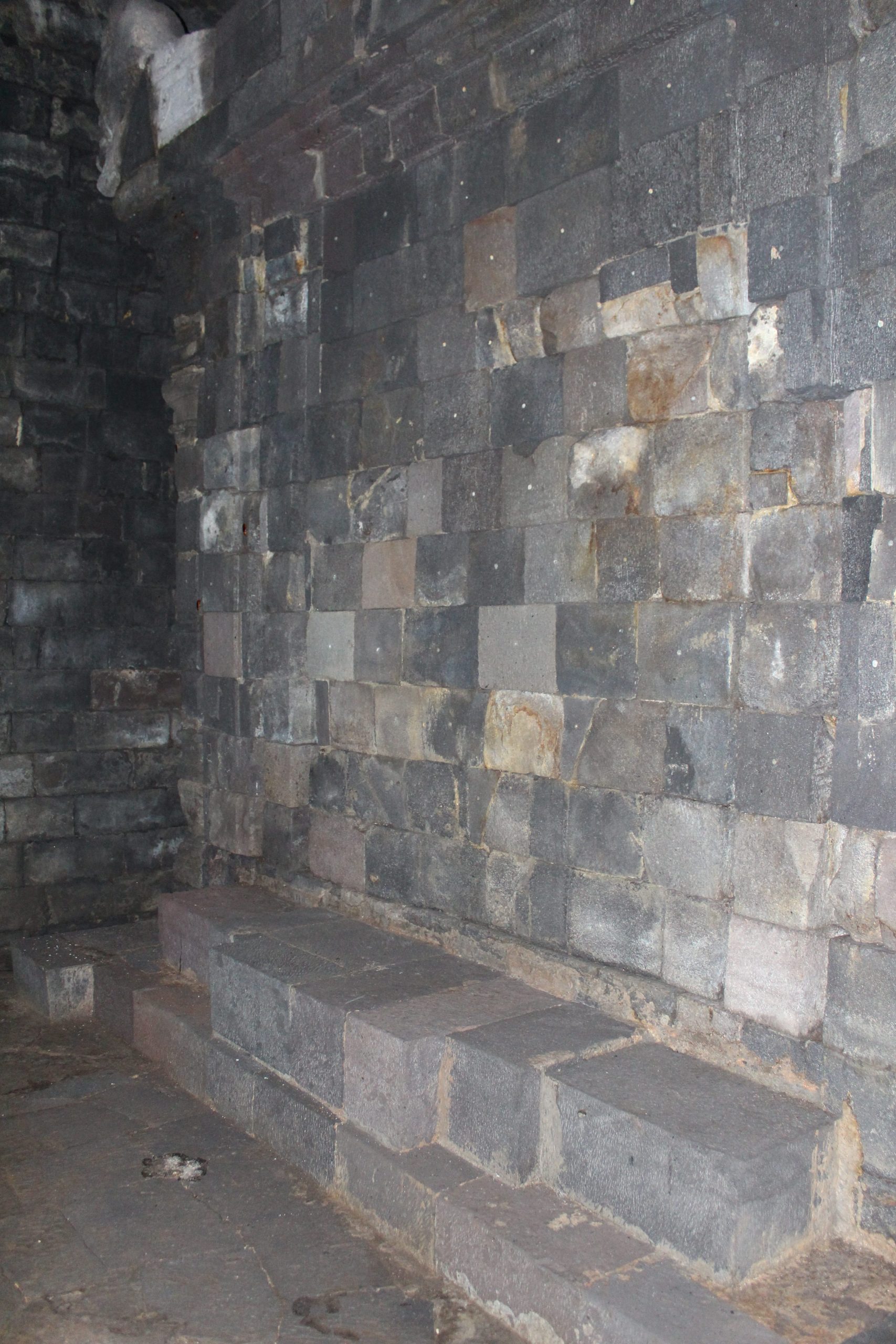
In the middle of the chamber is an altar with an empty throne positioned high on a semicircular platform.
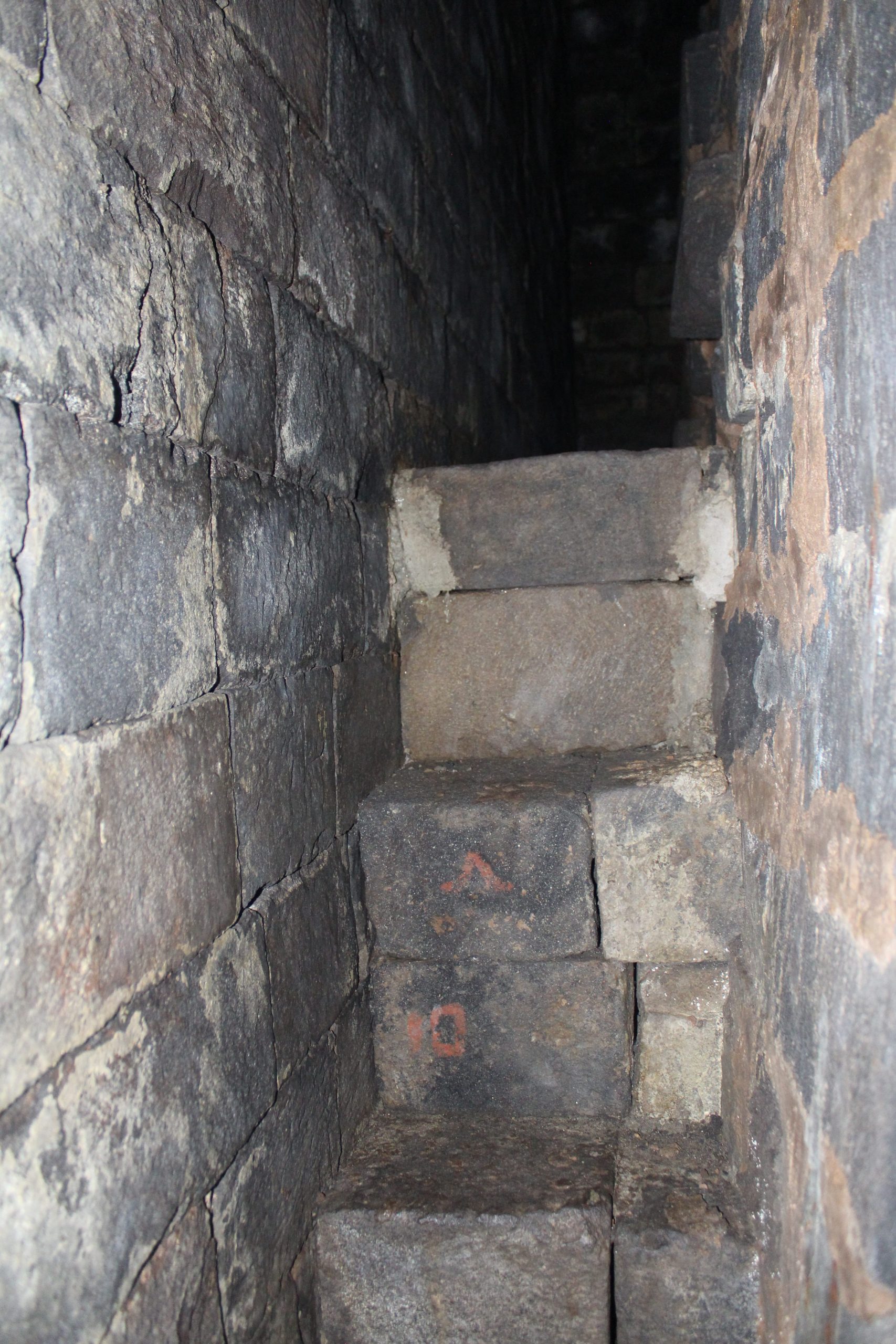

Yet another flight of stairs—this one wide enough only for a petite individual—ascends from the left side of the altar to just below the top of the throne back; a symmetrical one descends on the opposite side.
From the top, temple priests could have lustrated an image or a holy person with sacred fluids and possibly flowers.
